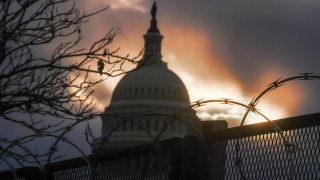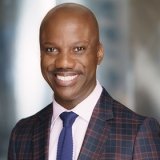Thousands of Americans gathered in our nation’s capital on Jan. 6, 2021, for a rally to support now-former President Donald Trump’s unfounded claims that the 2020 election was stolen from him. They were there to “Save America.” The overwhelming majority of attendees were White. Most were White men.
I sat in shock as I watched televised news coverage of so many people storming into and overtaking the Capitol. They boldly flooded one of the highest-security buildings in Washington, D.C. It baffled me that some were able to make it onto the U.S. Senate floor and remain there long enough to be photographed. How one man somehow made his way into House Speaker Nancy Pelosi’s office, sat in her chair and left her a handwritten note was all so mystifying to me. And then there were the protestors dangling off sides of the building. “How could this be happening?” I repeatedly asked myself. I also wondered why so little was being done to stop them, and why protesters were so visibly unafraid of the consequences of their actions. I pondered one additional question: What would have happened had these been Black people?
I know the answer—so, too, do most other Black Americans, including those who attend and are employed by our nation’s schools, colleges and universities.
There would have been a massacre. Outraged Black demonstrators attempting to come within steps of the Capitol while a joint session of Congress was being held would have been swiftly assassinated. There would have been a much heavier police presence and a far more militarized response. Snipers would have gunned down every Black protester scaling the Capitol building. Surely, more than one person would have been shot and killed. There also would have been a significantly higher number of arrests. The threat posed to congress people by a large mob of angry Black Americans would have been used to justify deadly use of force. Their killers would have been dubbed heroes.
Students deserve to know these truths.
The Capitol insurrection is a useful case study to teach students in K–12 schools and higher education institutions about the multifarious nature of White privilege. People of color cannot take over a federal building largely without consequence. A mob of White protesters violently occupying the Capitol is the latest exposure of America’s racialized double standard, in this instance as it pertains to law enforcement. In the aftermath of the tragic murders of George Floyd and Breonna Taylor, millions of demonstrators flooded America’s streets to march for Black lives. A heavy police presence often awaited them. Students should be afforded opportunities to juxtapose photos and videos from Jan. 6, 2021 with images from mostly peaceful protests that occurred throughout June 2020.
"Students deserve to know these truths." —Shaun R. Harper, Provost Professor of Education and Business
Hundreds of news stories and op-eds have been published about the racialized aspects of the Capitol insurrection. Furthermore, numerous clips of Black Americans and others talking about this are available on YouTube. Educators should use these digital resources to stimulate productive discussions in their classrooms. Without expecting them to speak on behalf of all Black people, first make space to hear Black students’ reactions to racial commentary about the insurrection. Ask how it made them feel. Then, ask students across all racial groups in the class why so many outraged White Americans were allowed to threaten members of Congress, storm into one of the nation’s most heavily secured facilities, destroy things and break laws largely without consequence. Why were so many of the insurrectionists White? Why were some carrying Confederate flags? And what should have been done to hold them accountable?
Law enforcement officials knew that hundreds, perhaps thousands of people were coming to Washington for the “Save America” rally. It was widely known that they were angry about ridiculous claims of election fraud. Teachers and professors should ask students to explain why more was not done in anticipation of chaos and violence, and what preparatory actions would have been taken had there been advance notice that thousands of angry Black people were showing up to a protest. Students should be invited to name other manifestations of White privilege, identify ways to raise public consciousness about it and ultimately eradicate racialized double standards in our democracy.





